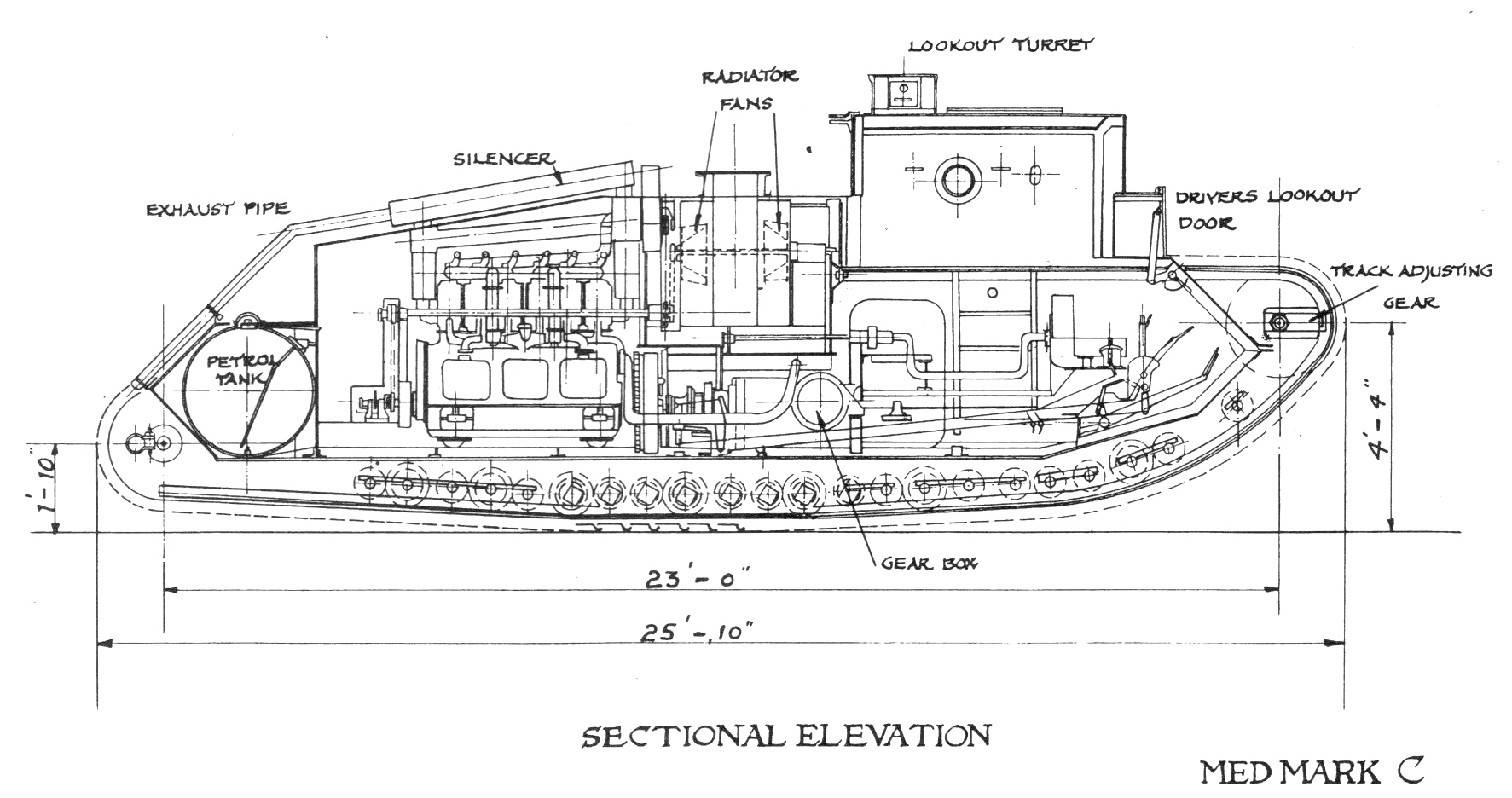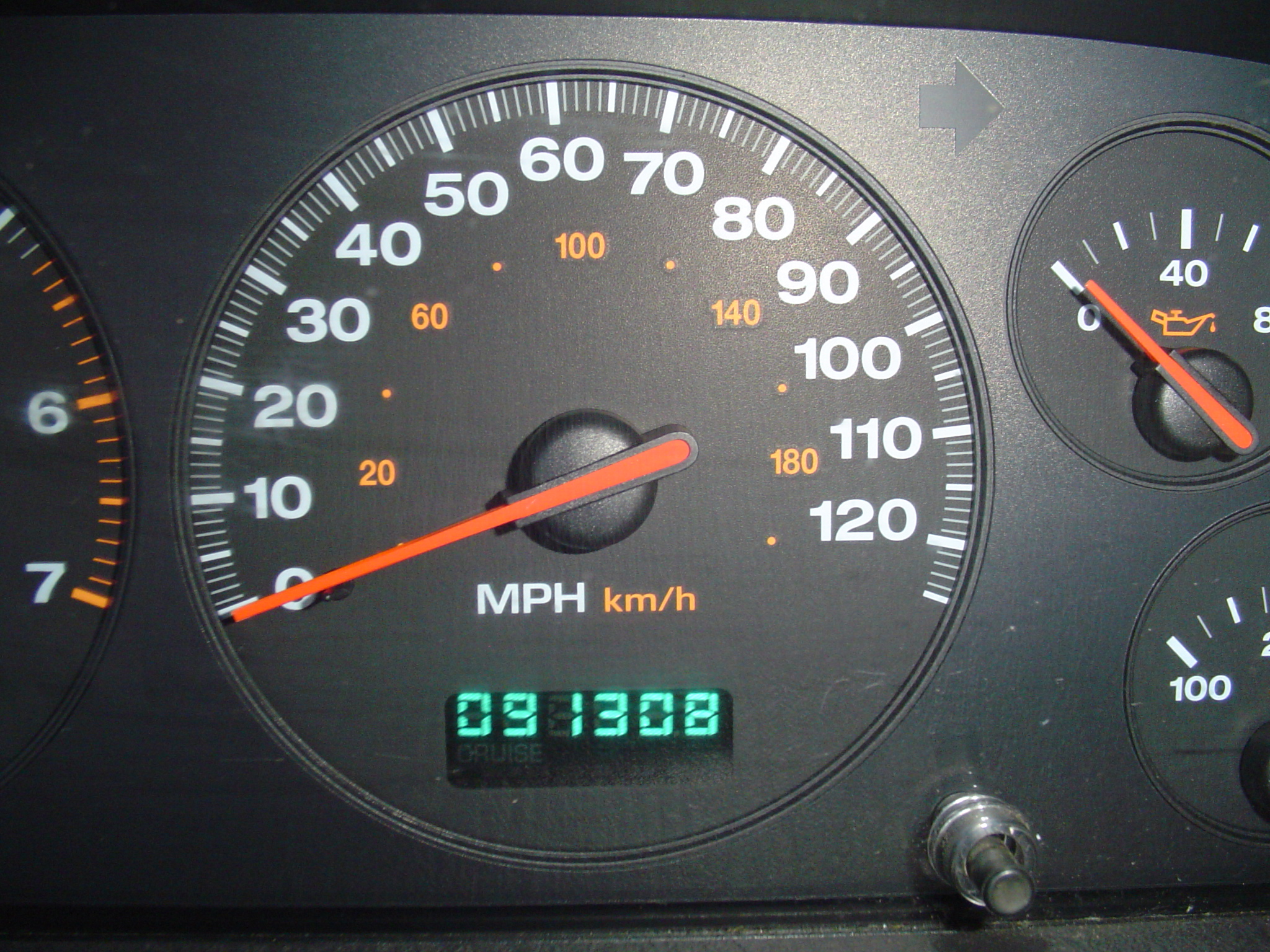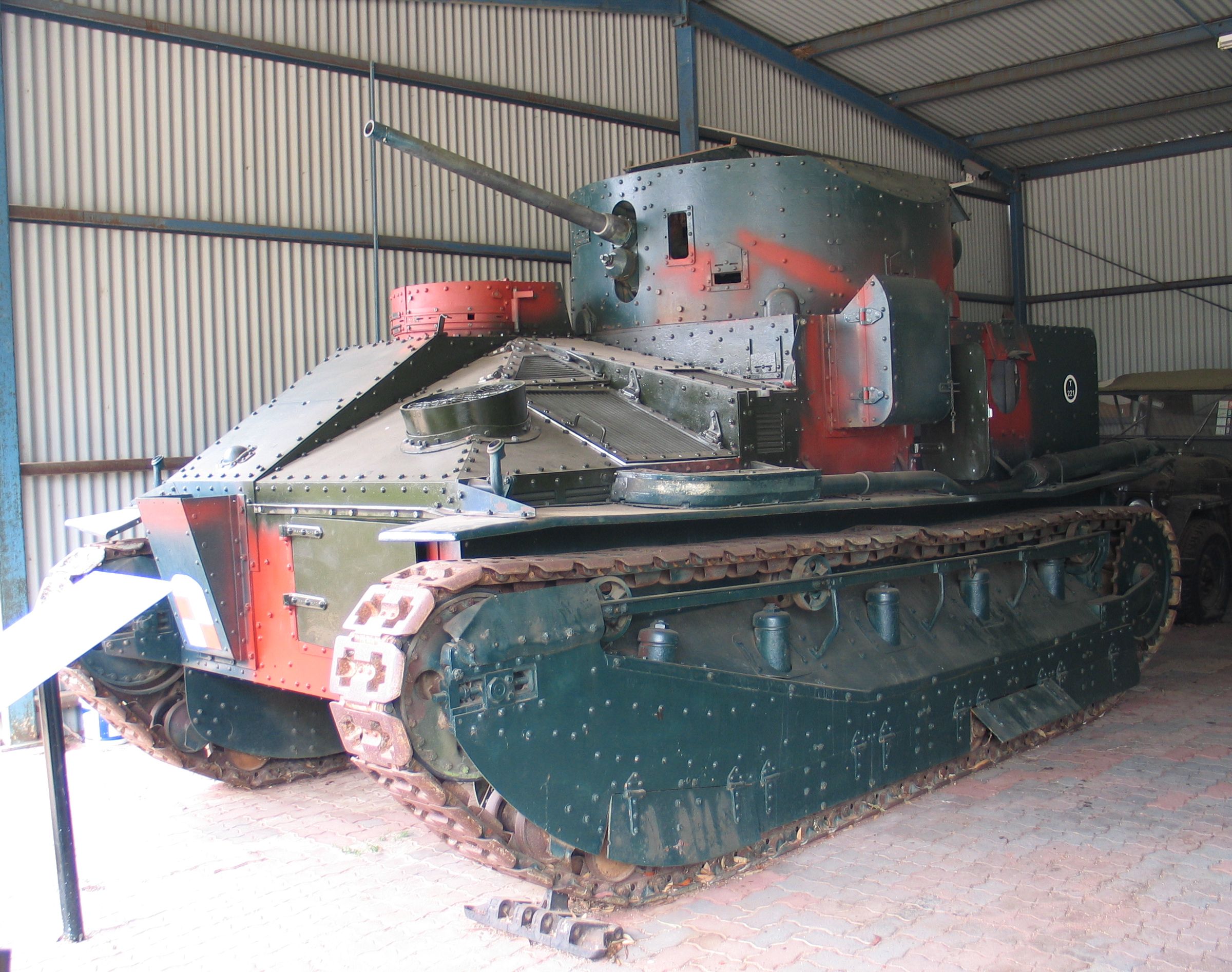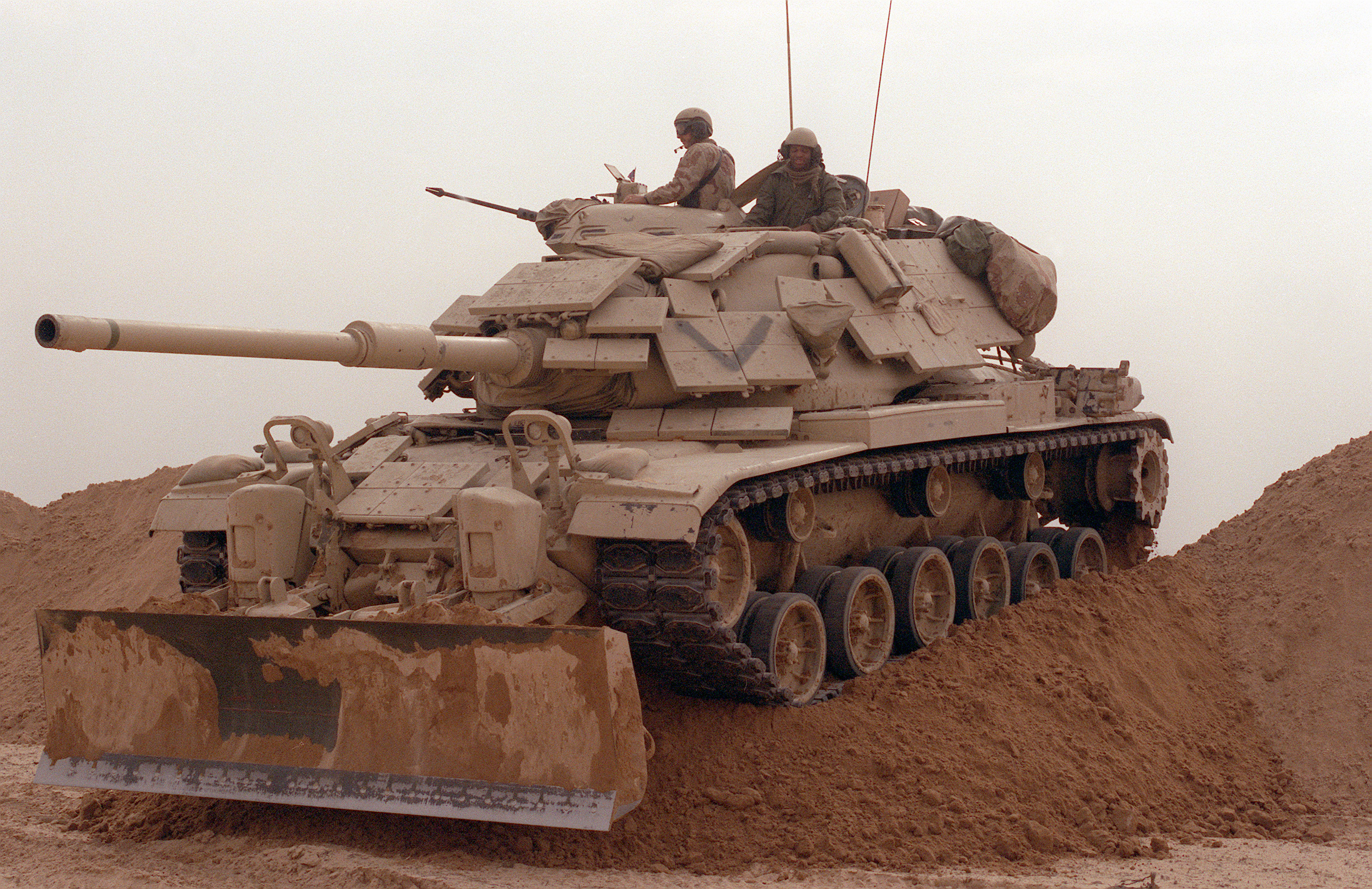|
Medium Mark C
The Medium Mark C Hornet was a British tank developed during the First World War, but produced too late to see any fighting. Development In 1917 Sir William Tritton had developed the Medium Mark A Whippet without involving his former co-worker Walter Gordon Wilson. In response Major Wilson began to design an improved type on his own, the Medium Mark B, in July 1917. As soon as he became aware of Wilson's intentions, Tritton ordered his chief designer, William Rigby, to design a rival type: the Medium Mark C. The drawings were approved by the British Army on 19 April 1918. The prototype was finished in August, a few weeks before the Medium B prototype also in construction at Tritton's own factory. At first 200 tanks were ordered; later this was increased to 600, all to be produced by William Foster & Co Ltd at Lincoln with Armlet & Wortley as subcontractor. The colloquial name of the tank was to be "Hornet", but it seems nobody ever used it. Description Superficially, the Medium C ... [...More Info...] [...Related Items...] OR: [Wikipedia] [Google] [Baidu] |
303 British
The .303 British (designated as the 303 British by the C.I.P. and SAAMI) or 7.7×56mmR, is a calibre rimmed rifle cartridge. The .303 inch bore diameter is measured between rifling lands as is the common practice in Europe which follows the traditional black powder convention. It was first manufactured in Britain as a stop-gap black powder round put into service in December 1888 for the Lee–Metford rifle. From 1891 the cartridge used smokeless powder which had been the intention from the outset, but the decision on which smokeless powder to adopt had been delayed. It was the standard British and Commonwealth military cartridge for rifles and machine guns from 1889 until the 1950s when it was replaced by the 7.62×51mm NATO. Cartridge specifications The .303 British has 3.64 ml (56 grains H2O) cartridge case capacity. The pronounced tapering exterior shape of the case was designed to promote reliable case feeding and extraction in bolt-action rifles and machine guns a ... [...More Info...] [...Related Items...] OR: [Wikipedia] [Google] [Baidu] |
Odometer
An odometer or odograph is an instrument used for measuring the distance traveled by a vehicle, such as a bicycle or car. The device may be electronic, mechanical, or a combination of the two (electromechanical). The noun derives from ancient Greek , ''hodómetron'', from , ''hodós'' ("path" or "gateway") and , ''métron'' ("measure"). Early forms of the odometer existed in the ancient Greco-Roman world as well as in ancient China. In countries using Imperial units or US customary units it is sometimes called a mileometer or milometer, the former name especially being prevalent in the United Kingdom and among members of the Commonwealth. History Classical Era Possibly the first evidence for the use of an odometer can be found in the works of the ancient Roman Pliny (NH 6. 61-62) and the ancient Greek Strabo (11.8.9). Both authors list the distances of routes traveled by Alexander the Great (r. 336-323 BC) as by his bematists Diognetus and Baeton. However, the high ac ... [...More Info...] [...Related Items...] OR: [Wikipedia] [Google] [Baidu] |
Medium Tanks
A medium tank is a classification of tanks, particularly prevalent during World War II which represented a compromise between the mobility oriented light tanks and the armour and armament oriented heavy tanks. A medium tank's classification is not actually based on weight, but off of tactical usage and intended purpose; for instance the German Panzerkampfwagen V Panther medium tank has a mass similar to contemporary Allied heavy tanks. The most widely produced, cost effective and successful tanks of World War II (the German Panzer IV, the Soviet T-34, and the American M4 Sherman) were all medium tank designs. Many of the medium tank lines became what are called main battle tanks in most countries. History The first tanks to carry the name "Medium" appeared in the First World War with the British Medium Mark A Whippet. It was smaller, lighter and faster than the British heavy tanks of the time and only carried machine guns. The medium tank doctrine came into use in the interwa ... [...More Info...] [...Related Items...] OR: [Wikipedia] [Google] [Baidu] |
World War I Tanks
The development of tanks in World War I was a response to the stalemate that developed on the Western Front. Although vehicles that incorporated the basic principles of the tank (armour, firepower, and all-terrain mobility) had been projected in the decade or so before the War, it was the alarmingly heavy casualties of the start of its trench warfare that stimulated development. Research took place in both Great Britain and France, with Germany only belatedly following the Allies' lead. In Great Britain, an initial vehicle, nicknamed Little Willie, was constructed at William Foster & Co., during August and September 1915. The prototype of a new design that became the Mark I tank was demonstrated to the British Army on 2 February 1916. Although initially termed "Landships" by the Landship Committee, production vehicles were named "tanks", to preserve secrecy. The term was chosen when it became known that the factory workers at William Foster referred to the first prototype as ... [...More Info...] [...Related Items...] OR: [Wikipedia] [Google] [Baidu] |
Vickers Medium Mark II
The Vickers Medium Mark II was a British tank built by Vickers in the Inter-war period. The Medium Mark II, derived from the Vickers Medium Mark I, was developed to replace the last of the Medium Mark Cs still in use. Production and rebuilding ran from 1925 until 1934. The tank was phased out of service from 1939, replaced by the Cruiser Mk I. It featured several improvements over the Vickers Mark I: a higher superstructure with the driver's visor on top of it instead of in front of it; an improved suspension protected by armour skirts; and Rackham clutches, providing a primitive form of mechanical servo-control. Due to a slightly higher weight its rated speed was somewhat slower than that of the Medium Mark I, at compared to . Design The Mark II used the same chassis, suspension and transmission as the Medium Mark I but had a new superstructure. The Mark II was equipped with a 47 mm 3 pdr gun and four machine guns in the turret. The back of the turret had a slope so that ... [...More Info...] [...Related Items...] OR: [Wikipedia] [Google] [Baidu] |
Vickers Medium Mark I
The Vickers Medium Mark I was a British tank of the Inter-war period built by Vickers from 1924. Background After the First World War Britain disbanded most of its tank units leaving only five tank battalions equipped with the Mark V and the Medium Mark C. At first a large budget was made available for tank design but this was all spent on the failed development of the Medium Mark D. When the government design bureau, the ''Tank Design Department'', was closed in 1923 any direct official involvement in tank development was terminated. However private enterprise in the form of the Vickers-Armstrong company built two prototypes of a new tank in 1921. Vickers Light Tank In 1920 the Infantry had plans to acquire a Light Infantry Tank. Colonel Johnson of the Tank Design Department derived such a type from the Medium Mark D. In competition Vickers built the Vickers Light Tank. The Vickers design still was reminiscent of the Great War types. It had a high, lozenge-shaped, track fram ... [...More Info...] [...Related Items...] OR: [Wikipedia] [Google] [Baidu] |
Battle Of George Square
The Battle of George Square was a violent confrontation in Glasgow, Scotland between Glasgow City Police and striking Glasgow workers, centred around George Square. The 'battle', also known as "Bloody Friday" or "Black Friday", took place on Friday 31 January 1919, 82 days after the end of the First World War. During the riot, the Sheriff of Lanarkshire called for military aid, and British troops, supported by six tanks, were moved to key points in Glasgow. The strike leaders were arrested for inciting the riot. Although it is often stated that there were no fatalities, one police constable died several months later from injuries received during the rioting. The "Forty Hours Strike" The end of the First World War saw the United Kingdom demobilise its military and industry from its war footing, reducing employment. This combined with the increasingly worsening domestic fiscal and monetary environment to create the prospect of mass unemployment. The Scottish TUC and Clyde Work ... [...More Info...] [...Related Items...] OR: [Wikipedia] [Google] [Baidu] |
Glasgow
Glasgow ( ; sco, Glesca or ; gd, Glaschu ) is the most populous city in Scotland and the fourth-most populous city in the United Kingdom, as well as being the 27th largest city by population in Europe. In 2020, it had an estimated population of 635,640. Straddling the border between historic Lanarkshire and Renfrewshire, the city now forms the Glasgow City Council area, one of the 32 council areas of Scotland, and is governed by Glasgow City Council. It is situated on the River Clyde in the country's West Central Lowlands. Glasgow has the largest economy in Scotland and the third-highest GDP per capita of any city in the UK. Glasgow's major cultural institutions – the Burrell Collection, Kelvingrove Art Gallery and Museum, the Royal Conservatoire of Scotland, the Royal Scottish National Orchestra, Scottish Ballet and Scottish Opera – enjoy international reputations. The city was the European Capital of Culture in 1990 and is notable for its architecture, cult ... [...More Info...] [...Related Items...] OR: [Wikipedia] [Google] [Baidu] |
Anglo-Irish War
The Irish War of Independence () or Anglo-Irish War was a guerrilla war fought in Ireland from 1919 to 1921 between the Irish Republican Army (IRA, the army of the Irish Republic) and British forces: the British Army, along with the quasi-military Royal Irish Constabulary (RIC) and its paramilitary forces the Auxiliaries and Ulster Special Constabulary (USC). It was part of the Irish revolutionary period. In April 1916, Irish republicans launched the Easter Rising against British rule and proclaimed an Irish Republic. Although it was crushed after a week of fighting, the Rising and the British response led to greater popular support for Irish independence. In the December 1918 election, republican party Sinn Féin won a landslide victory in Ireland. On 21 January 1919 they formed a breakaway government ( Dáil Éireann) and declared Irish independence. That day, two RIC officers were killed in the Soloheadbeg ambush by IRA volunteers acting on their own initiative. The c ... [...More Info...] [...Related Items...] OR: [Wikipedia] [Google] [Baidu] |
Entente Intervention In The Russian Civil War
Allied intervention in the Russian Civil War or Allied Powers intervention in the Russian Civil War consisted of a series of multi-national military expeditions which began in 1918. The Allies first had the goal of helping the Czechoslovak Legion in securing supplies of munitions and armaments in Russian ports; during which the Czechoslovak Legion controlled the entire Trans-Siberian Railway and several major cities in Siberia at times between 1918 and 1920. By 1919 the Allied goal became to help the White forces in the Russian Civil War. When the Whites collapsed the Allies withdrew their forces from Russia by 1920 and further withdrawing from Japan by 1922. The goals of these small-scale interventions were partly to stop Germany from exploiting Russian resources, to defeat the Central Powers (prior to the Armistice of November 1918), and to support some of the Allied forces that had become trapped within Russia after the 1917 Bolshevik revolution. Allied troops landed in Ar ... [...More Info...] [...Related Items...] OR: [Wikipedia] [Google] [Baidu] |
Materiel
Materiel (; ) refers to supplies, equipment, and weapons in military supply-chain management, and typically supplies and equipment in a commercial supply chain context. In a military context, the term ''materiel'' refers either to the specific needs (excluding manpower) of a force to complete a specific mission, or the general sense of the needs (excluding manpower) of a functioning army. An important category of materiel is commonly referred to as ordnance, especially concerning mounted guns (artillery) and the shells it consumes. Along with fuel, and munitions in general, the steady supply of ordnance is an ongoing logistic challenge in active combat zones. Materiel management consists of continuing actions relating to planning, organizing, directing, coordinating, controlling, and evaluating the application of resources to ensure the effective and economical support of military forces. It includes provisioning, cataloging, requirements determination, acquisition, distrib ... [...More Info...] [...Related Items...] OR: [Wikipedia] [Google] [Baidu] |
2nd Tank Battalion
The 2nd Tank Battalion (2nd Tanks) was an armored battalion of the United States Marine Corps which was based out of the Marine Corps Base Camp Lejeune, North Carolina. It fell under the command of the 2nd Marine Division and the II Marine Expeditionary Force. The United States Marine Corps plans to deactivate its tank battalions in order to conform to its 2030 modernization plan. After 79 years of service the 2nd Tank Battalion was decommissioned on May 5, 2021. History World War II The battalion formed on December 20, 1941, at Camp Elliott, San Diego, California, growing to the standard organization with a headquarters, service and four letter companies (Able, Baker, Charlie, Dog). Baker Company deployed to Samoa in January and Charlie Company sailed with the 2nd Marine Regiment to the Solomon Islands. On August 8, 1942, two M3 tanks participated in seizing Tanambogo Island against heavy resistance. 2nd Tanks participated in every action of the 2nd Marine Division to inc ... [...More Info...] [...Related Items...] OR: [Wikipedia] [Google] [Baidu] |



.jpg)






